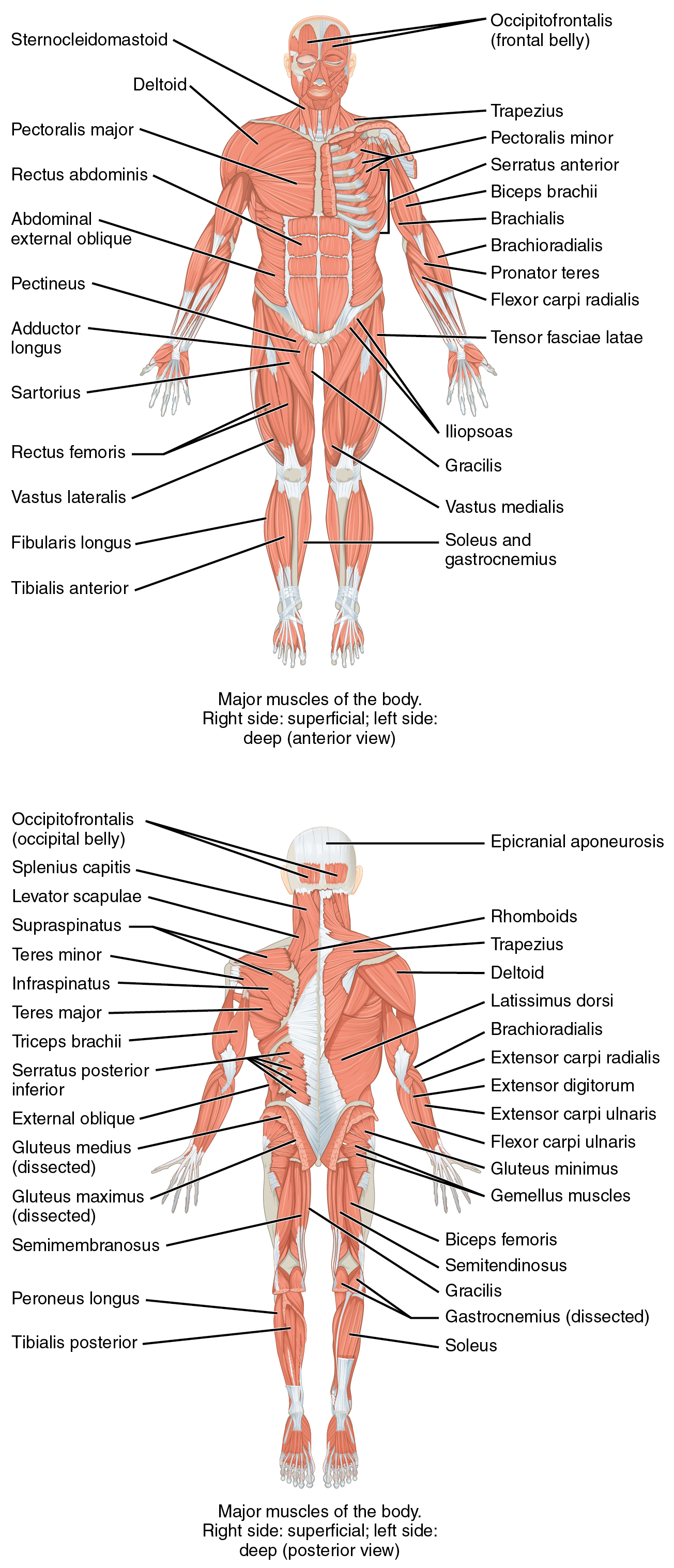Use the Key Terms to Identify the Muscles Described Next
Cartilaginous fibrous synovial 1. No role in supination two muscles n 4.

11 4 Identify The Skeletal Muscles And Give Their Origins Insertions Actions And Innervations Anatomy Physiology
Use the key provided in question 7 to identify the muscles described next a 1 from BIOLOGY 2401 at University of Texas Arlington.

. Lateral compartment muscles that plantar 3. Location of muscle relative to. Direction in which the muscle fibers run relative to some imaginary line.
Use the key provided in question 7 to identify the muscles described next. No role in supination two muscles 4. Flexes the forearm and supinates the hand 2.
Use the key terms to identify the joint types described below. Extend leg and flex. Bundle of muscle cells.
Ulnar side of second finger. Match the key terms to the muscles and movements described below. Use the items in the key to correctly identify the structures.
Zygomaticus major and minor n 1. Abducts the thigh to take the at ease flex the foot two muscles 6 adducts the thigh as when standing at attention 7 extends the toes flex and evert the foot two muscles stance 8. Used to suck in your cheeks k 7.
Power wrist flexor and abductor h 6. Learn vocabulary terms and more with flashcards games and other study tools. Please answer this one.
The and are. Pronate the hand two muscles 8. Include joints betwoon the vertebral bodies and the pubic symphysis 3.
1term for the biceps brachii during elbow flexion. Anchors packages and supports body organs. Places the palm upward two muscles flexes the forearm and supinates the hand forearm flexors.
Can you identify the Key Term being described on each slide. Help form the abdominal girdle four pairs. Synergist for supination of hand.
Essentially immovable joints 4. Used to pout pulls the comers of the mouth downward 9. Forms endocrine and exocrine glands 4.
Synergist for supination of hand 3. Flexes the forearm and supinates the hand m 2. Used in blinking and squinting h 8.
Your kisser j 3. Prime mover agonist antagonist. Term that describes the relation of brachioradialis to biceps brachii during forearm flexion.
Use the key provided in question 7 to identify the muscles described next. Used to form the vertical frown crease on the forehead a 2. Term for the biceps brachii during forearm flexion 2.
2term that describes the relation of brachialis to biceps brachii during elbow flexion. Flexes the thumb 9. Have a fibrous articular.
Use the key terms in question 9 to respond to the descriptions below 5 posterior compartment muscles that plantar 1. Deep branch of ulnar nerve. They also flex at metacarpophalengeal and extend at interphalengeal.
Location of muscle relative to bone or body region. Using choices from the key identify the major muscles described next. Radial side of 4th and 5th fingers.
A major spine flexor Key. Use the terms provided in question I to identify the muscles described next flexor carpi ulnaris triceps brachii Review Sheet 15 543 l. Connective tissue covering a bundle of muscle cells.
Sutures are the most remembered examples 5. Synergist for supination of hand bc 3. Lines body cavities and covers the bodys external surface.
Elbow extensor f 5. 8 Use the terms provided in question 1 to identify the muscles described next from BIOL 10212 at Rowan University. Start studying Identify the Muscles.
Location of muscle relative to bone or body region. Using the key provided in question 3 identify the muscles described next. Pumps blood flushes urine out of the body allows one to swing a bat 3.
Use the key provided in question 7 to identify the muscles described next. Match the key terms to the descriptions below. Prime mover for pulling the arm posteriorly deltoid 3.
Identify the muscles described by completing the following statements. Expert solutions for 2Match the key terms to the muscles and movements described below. Origin of 2nd and 3rd.
Flexes the thumb d 9. Use an appropriate reference as needed. Flexes the forearm and supinates the hand 2.
Origin of 1st one. Number the following statements in the proper. No role in supination elbow extensor power wrist flexor and abductor extends and abducts the wrist.
Use key choices to identify major tissue types described below. Elbow extender erector spinae 4. Power wrist flexor and abductor 6.
Contractile unit of muscle. Pronate the hand two muscles 8. Typically allow a slight degree of movement 2.
Prime mover to raise the mandible c 4. Cartilage connects the bony portions 6. Flexes wrist and middle phalanges 7.
Muscles of the Trunk and Upper Limb 3. 3term for the triceps brachii during elbow flexion. Used in smiling b 6.
Flexes wrist and middle phalanges k I 7. Adduction towards middle finger axial line.

Front View Muscles Worksheet Homeschool Helper Online Muscle Diagram Human Body Muscles Human Muscular System

Comments
Post a Comment